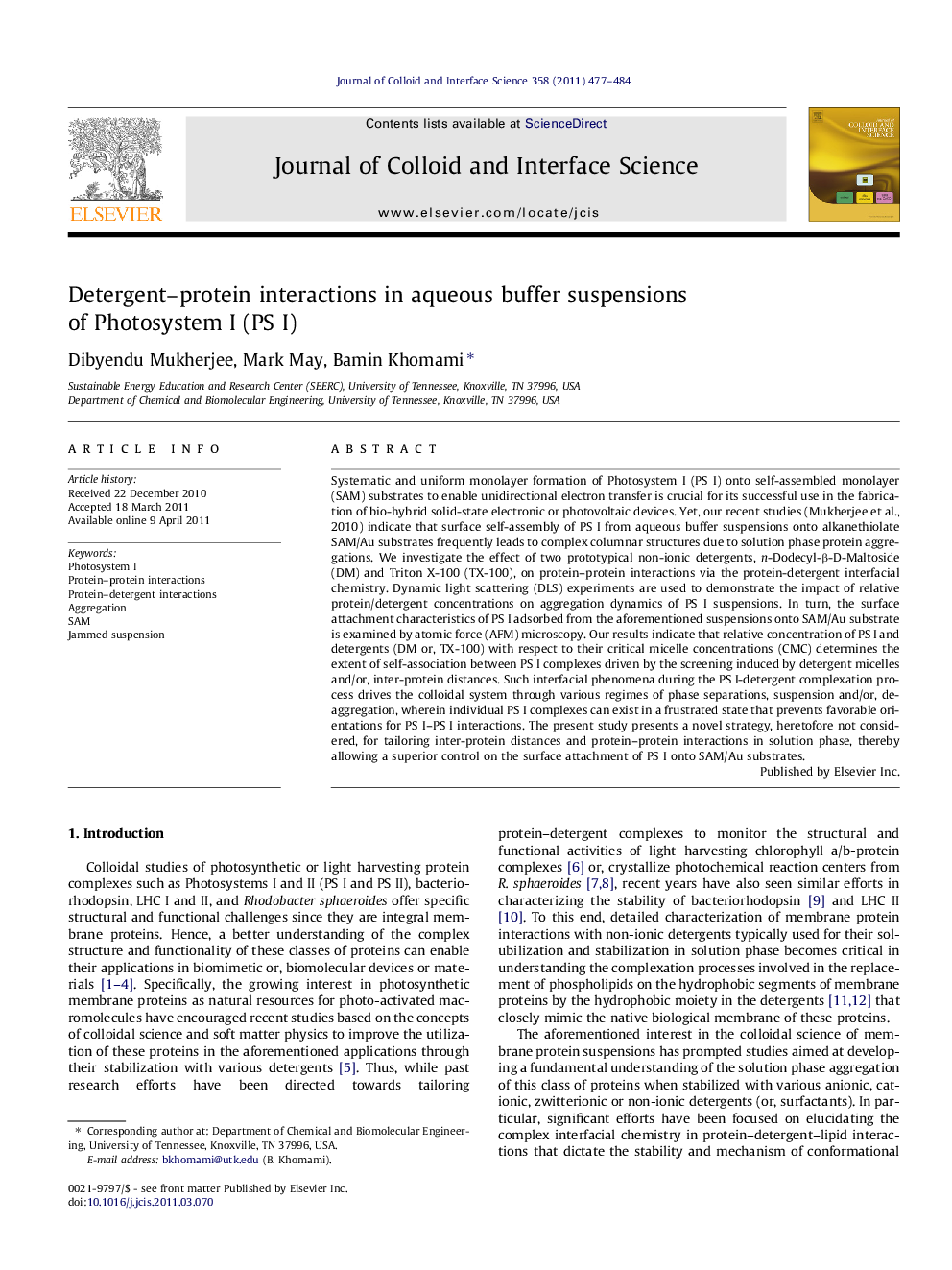| Article ID | Journal | Published Year | Pages | File Type |
|---|---|---|---|---|
| 608598 | Journal of Colloid and Interface Science | 2011 | 8 Pages |
Systematic and uniform monolayer formation of Photosystem I (PS I) onto self-assembled monolayer (SAM) substrates to enable unidirectional electron transfer is crucial for its successful use in the fabrication of bio-hybrid solid-state electronic or photovoltaic devices. Yet, our recent studies (Mukherjee et al., 2010) indicate that surface self-assembly of PS I from aqueous buffer suspensions onto alkanethiolate SAM/Au substrates frequently leads to complex columnar structures due to solution phase protein aggregations. We investigate the effect of two prototypical non-ionic detergents, n-Dodecyl-β-D-Maltoside (DM) and Triton X-100 (TX-100), on protein–protein interactions via the protein-detergent interfacial chemistry. Dynamic light scattering (DLS) experiments are used to demonstrate the impact of relative protein/detergent concentrations on aggregation dynamics of PS I suspensions. In turn, the surface attachment characteristics of PS I adsorbed from the aforementioned suspensions onto SAM/Au substrate is examined by atomic force (AFM) microscopy. Our results indicate that relative concentration of PS I and detergents (DM or, TX-100) with respect to their critical micelle concentrations (CMC) determines the extent of self-association between PS I complexes driven by the screening induced by detergent micelles and/or, inter-protein distances. Such interfacial phenomena during the PS I-detergent complexation process drives the colloidal system through various regimes of phase separations, suspension and/or, de-aggregation, wherein individual PS I complexes can exist in a frustrated state that prevents favorable orientations for PS I–PS I interactions. The present study presents a novel strategy, heretofore not considered, for tailoring inter-protein distances and protein–protein interactions in solution phase, thereby allowing a superior control on the surface attachment of PS I onto SAM/Au substrates.
Graphical abstractCase I: Low PS I and detergent concentrations in buffer solutions lead to solution-phase bulk aggregation due to large inter-protein distances (RPSI–PSI < 200 nm) allowing the rotational diffusions of PS I to align them in favorable top–bottom orientations that deposit as columnar structures on SAM substrates. Case II: High PS I and detergent concentrations in buffer solutions lead to hindered aggregation of PS I due to small inter-protein distances (RPSI–PSI < 80 nm) constraining the rotational diffusions of PS I, thereby leaving them in a frustrated state, i.e., jammed suspensions, that deposit as individual trimers on SAM substrates.Figure optionsDownload full-size imageDownload high-quality image (168 K)Download as PowerPoint slideHighlights► Protein–protein interactions via protein-detergent interfacial chemistry are studied. ► PS I/detergent concentrations dictate screening effects in PS I–PS I interactions. ► Self-association of PS I hindered by jammed colloidal suspensions. ► Novel strategy to tailor surface morphology of PS I adsorbed onto SAM/Au substrates.
